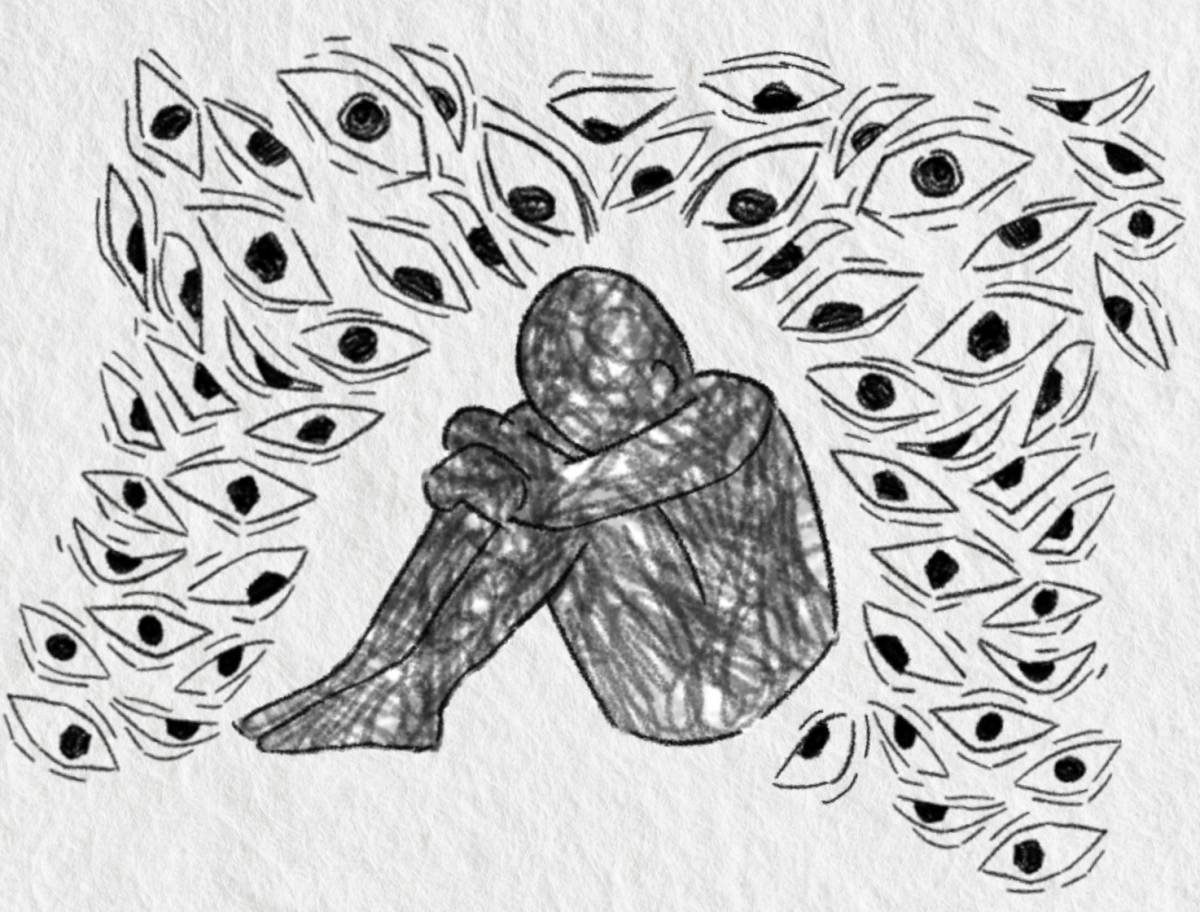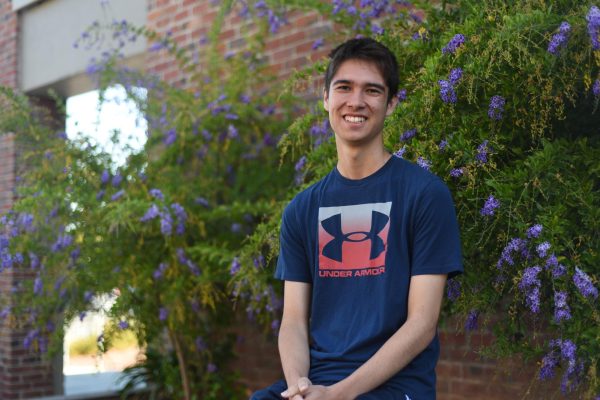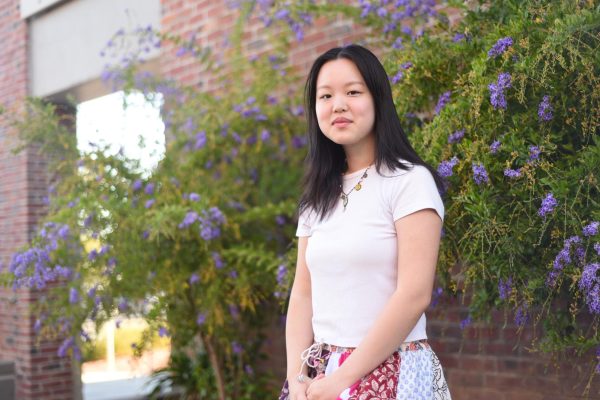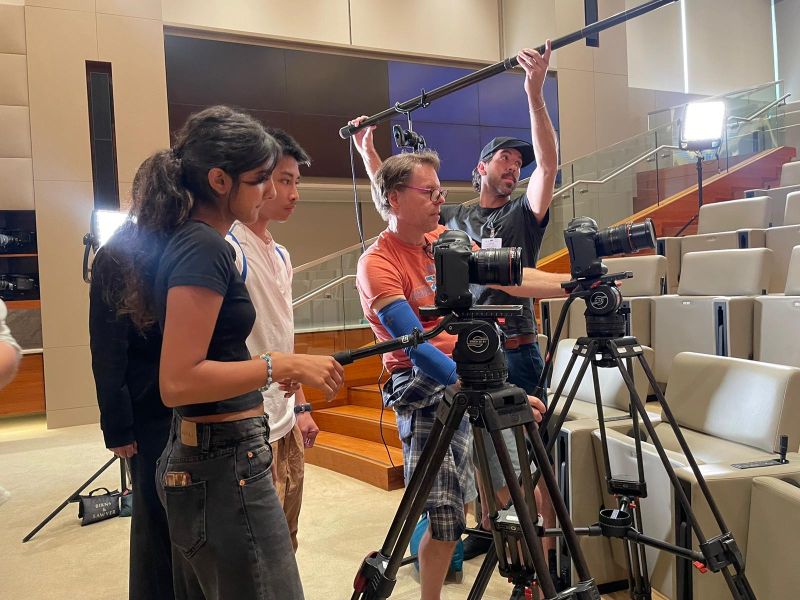“I want everyone in this class and beyond to see the version of you that I see.”
Senior Hailey Chen recalls Interdisciplinary Research and Project Design adviser Kavita Gupta’s words lingering in the air as she collected herself after enduring a public speaking failure. Just before Chen had given her conference presentation to IRPD, the same feeling of dread she had always felt before speaking in front of her peers washed over her. The overwhelming nervousness became apparent as she slurred her speech and began mumbling and rushing in incoherency. Chen had faced similar public speaking failures as a result of her social anxiety, but in this particular failure, Gupta’s encouragement to not let anxiety overshadow her authenticity motivated her to overcome it.
Before joining IRPD in her senior year, Chen says she rarely experienced social anxiety. Social anxiety is a disorder characterized by a fear of being judged in social situations and affects around 9.1% of adolescents, indicating an increasing prevalence among younger generations, according to the National Institute of Mental Health. While Chen says the emphasis on speaking in IRPD prompted her to begin experiencing social anxiety, its structure also allowed her to overcome it.

“By nature, I’m very introverted, and I don’t always like to show my work with others until the product is completed,” Chen said. “IRPD was the first course that encouraged public failure. In IRPD, you’re expected to publicly fail and share your journey with everyone, whereas in other classes, if you screw up an exam, you don’t need to tell anyone. That’s the beauty of IRPD, but at the same time, I hadn’t been exposed to failure before.”
De Anza College professor of psychology Robin Schulte says social anxiety can be caused by genetic and environmental factors, or a combination of both. Schulte believes that the COVID-19 pandemic was one environmental factor that increased social anxiety for many people.
“COVID-19 is where we have gotten this message to not connect because we didn’t want to get sick,” Schulte said. “Then we got the message of, ‘Okay, now we can interact, and now we can connect. Now we don’t have to stand six feet apart, now we can talk to people without masks.’ And I think a lot of individuals are still scared. They’ve already gotten used to not connecting with others, and so social anxiety has definitely increased.”
According to Schulte, one treatment for social anxiety is exposure therapy, where individuals place themselves in more unfamiliar social situations so that they gradually become less anxiety-inducing. Chen recognizes that gaining exposure to public speaking through IRPD as a crucial part of working towards overcoming her social anxiety.
Senior Shulang Zhang echoes Chen and Schulte’s sentiments, especially after helping a close friend overcome social anxiety. Zhang, who considers herself an extrovert, feels like she made her friend more willing to talk to strangers. She attributes this to them hanging out with each other for a while, so her mindset rubbed off on her friend.
Chen believes that pressure from the community can lead to social anxiety. According to Chen, social anxiety has become more pernicious among her peers because of the competitive culture surrounding career and academics in Silicon Valley.
“I’d say that conversations about mental health overall do need to be expanded more, especially in environments like MVHS or any pressure cooker environment,” Chen said. “When you’re pressured to do well, people feel overwhelmed. They are sometimes impaired and can’t function properly. I was lucky it never came to that for me, but I have seen it happen around campus.”
Schulte aims to create an environment adaptable to students who may have social anxiety in her Psychology classes. After noticing that certain students were more reluctant to speak in in-person classes but were more comfortable in virtual sessions, she encouraged students affected by social anxiety to compromise. For example, instead of in-class final speeches, Schulte sometimes offers a written paper alternative. However, to expose her students to more social situations, she still tries to encourage student participation.

“I’m one of these professors that gets to know my students, and I get to learn their names and I call on them in class,” Schulte said. “I have found that students have actually come to me and have shared with me, ‘I wasn’t expecting that, however, thank you.’ In fact, I have found that that really draws them out, and they feel noticed, and they see that, ‘OK, look at that. I answered a question. I was OK, and this professor cares about me.’ And that helps, believe it or not.”
Shulte also says a factor of increasing social anxiety is the heavy presence of social media. According to Shulte, because people are increasingly drawn to their devices rather than in-person interactions, they lose opportunities for social exposure and important aspects of exchanges, such as body language.
“We have to learn that balance of time that we’re using our phones and being disconnected versus just being with people and learning to connect again in person,” Schulte said. “Devices and social media are starting to help people to be more socially anxious because they’re losing connection with others. You just want to have balance and to not have that be your only way to connect with individuals.”
The ability to connect with individuals is what motivated Zhang to step out of her comfort zone while experiencing social anxiety. Zhang thinks that those with social anxiety can be helped by changing their mindsets about social interaction. For example, she says her anxiety often stemmed from a hyperfixation on others’ perceptions of her in the moment — thus, she shifted her focus instead on the opportunities around her to make connections to increase her quality of life.
“If you don’t open up and talk to other people, you would miss a lot of opportunities to meet new people, and society is based on connections,” Zhang said. “At the end of the day, no one really cares what you do and they all have their own things to do in their life. Nothing really matters, only your happiness.”












